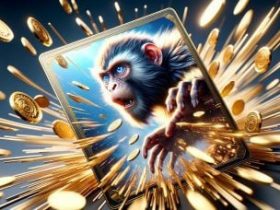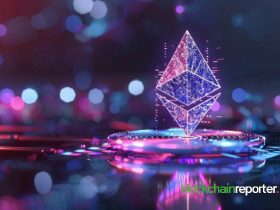Over the years, Non-Fungible Token (NFT) trends have witnessed a remarkable transformation, reflecting the dynamic nature of the digital market and the growing integration of blockchain technology.
From their nascent stages to becoming a mainstream phenomenon, NFT trends have evolved to encompass a wide array of applications, from art and collectibles to gaming and real-world asset tokenisation.
NFT market growth
Notably, the revenue growth rate of the NFT market has been nothing short of remarkable, reflecting the exponential rise in demand for digital assets and the adoption of blockchain technology.
According to data from statista, NFT market revenue is projected to reach $2,378.0 million by the end of 2024. According to the statistics, the average revenue per user in the NFT market in 2024 amounts to $162.1.
Key markets such as the United States, South Korea, Singapore, Brazil, and France have emerged as frontrunners in the NFT space, contributing significantly to the overall revenue growth.
The United States of America accounts for the highest revenue collection in the NFT market looking at the global comparison perspective.
NFT trends timeline: a journey through the years
The journey from 2021 to 2024 has been marked by significant milestones and shifts.
In 2021, NFTs emerged as a cultural phenomenon, with Ordinals introducing a novel approach to tokenization on the Bitcoin blockchain.
The following year, 2022, witnessed explosive growth and mainstream adoption of NFTs, albeit accompanied by challenges like fraud and security risks, while the introduction of Real-World Asset (RWA) tokenization marked a transformative moment.
By 2023, the NFT market experienced a resurgence, characterized by cautious adaptation and the expansion of NFT applications into diverse sectors.
Looking forward to the remaining part of 2024, projections indicate continued growth and innovation, with the recent introduction of Hybrid NFTs expected to reshape the market landscape and unlock new opportunities for stakeholders.
Exploring key NFT trends in 2024
Hybrid NFTs: bridging uniqueness and liquidity
Hybrid NFTs represent a novel class of digital assets that combine the unique characteristics of non-fungible tokens (NFTs) with the liquidity and divisibility of fungible tokens (FTs).
The adoption of the ERC404 standard has been instrumental in enabling fractional ownership of NFTs, allowing investors to own fractions of high-value assets.
This innovation addresses the liquidity challenges faced by the NFT market, making valuable assets more accessible to a broader audience.
Hybrid NFTs find applications across various sectors, from art and collectibles to real estate and gaming, promising to reshape the NFT market landscape significantly.
RWA tokenisation: transforming the investment landscape
Real World Asset (RWA) tokenisation revolutionises traditional investment paradigms by digitising tangible assets such as real estate, art, and commodities on the blockchain.
This approach breaks down high-value assets into smaller, purchasable tokens, democratizing access to investment opportunities.
Success stories in 2023 demonstrate the potential of RWA tokenisation, with projects tokenising commercial real estate and fine art gaining traction.
Looking ahead, RWA tokenisation holds promise for broader applications across luxury goods, intellectual property, and even intangible assets like carbon credits, offering unprecedented opportunities for investors and creators alike.
NFT gaming expansion: redefining player engagement
The integration of NFTs into the gaming industry marks a paradigm shift in player engagement and game development.
Notable projects and partnerships in the gaming sector illustrate the transformative potential of NFT integration, empowering players with true ownership of in-game assets.
This trend promises to introduce innovative gameplay mechanics, foster dynamic in-game economies, and enhance user interaction.
With the gaming NFT market experiencing significant revenue growth and user base expansion, the future of NFTs in gaming appears promising, with continued evolution and innovation expected in 2024.
Ordinals: Bitcoin-based NFTs
Ordinals offer a fresh perspective on NFTs by leveraging the Bitcoin blockchain, providing an alternative to Ethereum-dominated markets.
These Bitcoin-based NFTs embed digital artefacts within individual satoshis, showcasing Bitcoin’s potential for complex applications.
Despite challenges such as increased transaction load and cultural barriers within the Bitcoin community, Ordinals represent a promising avenue for expanding Bitcoin’s utility beyond traditional transactions.
Adoption trends suggest continued exploration and innovation in leveraging Bitcoin for NFTs, with potential implications for the broader cryptocurrency ecosystem.
Phygital NFTs: merging physical and digital realms
Phygital NFTs bridge the physical and digital worlds, offering tangible aspects to virtual assets. Examples like luxury watches tokenised on the blockchain demonstrate how Phygital NFTs enhance customer engagement and ownership verification.
With the potential for broader adoption across various industries, Phygital NFTs pave the way for a new hybrid reality, where physical and digital assets seamlessly coexist.
As technology advances and adoption grows, Phygital NFTs hold promise for transforming concepts of ownership and value, shaping the future of the digital economy.
Conclusion
The evolution of NFTs has been characterized by rapid expansion and transformative trends with the market witnessing the emergence of Hybrid NFTs, RWA tokenization, and NFT integration in gaming, signifying a dynamic evolution.
Looking ahead, Hybrid NFTs are expected to bridge the gap between uniqueness and liquidity, while RWA tokenization will democratize access to digital assets.
The gaming sector is also expected to see further integration of NFTs, enhancing player engagement and revenue streams.
And despite challenges, such as security risks and market volatility, the NFT market is poised for sustained expansion, with 2024 set to be a year of significant advancement and exploration of the digital asset space as other cryptocurrencies including Bitcoin (BTC) and Ethereum (ETH) test new grounds.
The post NFT market watch: exploring the dynamic landscape of NFT trends in 2024 appeared first on Invezz







Leave a Reply